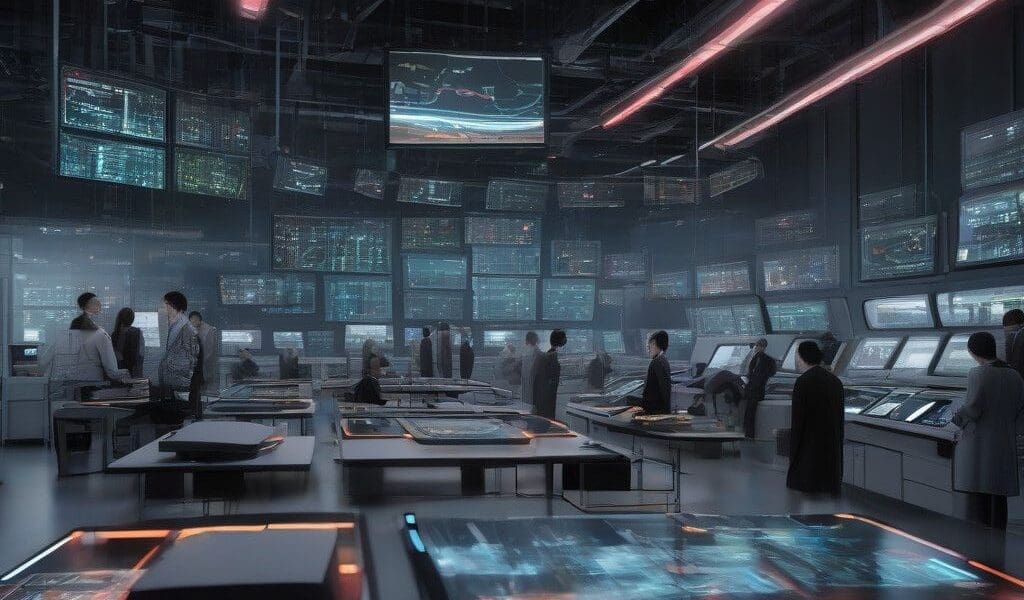Kioxia Anticipates Surge in Flash Memory Demand by 2028
Kioxia, a leading name in the semiconductor industry, has shared ambitious plans to scale its production capabilities in response to the projected 2.7-fold increase in demand for flash memory by 2028. This forecast is heavily driven by the rapid advancements in artificial intelligence (AI) technology, which are reshaping the landscape of modern electronics.
The company recently announced that it would be expanding its manufacturing facilities, particularly focusing on a new site in Kitakami, located in Japan’s Iwate Prefecture. Originally set to commence operations in 2023, the factory’s opening has been postponed to autumn 2025, allowing the company more time to prepare for the anticipated increases in production requirements.
A Shift in Corporate Strategy
Kioxia, previously known as Toshiba Memory, has undergone significant changes since separating from its parent company, Toshiba Corporation. Under the leadership of Bain Capital, the chipmaker has seen a shift in focus, concentrating on enhancing its production capacities while navigating the complexities of the global semiconductor market.
Executive Vice President Tomoharu Watanabe expressed optimism about the new factory in Kitakami. He indicated that it would play a crucial role in facilitating the company’s capacity to meet the escalating demand for memory solutions spurred by advancements in AI, which are expected to boost server technology and reinvigorate interest in consumer devices such as smartphones and personal computers.
Flash memory, especially NAND technology, forms the backbone of data storage in various applications from mobile devices to data centers. The forecasted growth is closely tied to trends that see AI applications requiring increasingly robust storage solutions to handle vast amounts of data.
Government Support and Investment
This expansion comes amidst a supportive framework from the Japanese government, which has pledged up to $1.64 billion in subsidies to Kioxia and its partner Western Digital. This financial backing is aimed at bolstering the capacity expansion initiatives at both the Yokkaichi and Kitakami facilities, marking a vital investment in Japan’s semiconductor sector, which aims to reclaim its former dominance in the global market.
Kioxia is not alone in its endeavors; the surge in AI technologies has prompted other semiconductor manufacturers to ramp up their production to capture market share in this burgeoning field. The competitive landscape is intensifying, with many firms investing heavily in infrastructure to meet future demands.
Challenges in the Semiconductor Market
However, Kioxia’s journey is not without setbacks. Bain Capital recently canceled plans for an initial public offering (IPO) for Kioxia after potential investors raised concerns regarding the company’s valuation. This scrutiny highlights the challenges that semiconductor companies face, including fluctuating market demands and competition from global players.
Moreover, the semiconductor industry has been grappling with supply chain constraints and fluctuating prices, exacerbated by geopolitical tensions and the pandemic’s residual effects. These factors not only impact production timelines but also require companies to adopt flexible strategies to navigate an uncertain market landscape.
Looking Ahead: The Role of AI in Memory Demand
As Kioxia prepares to ramp up its production capabilities, the anticipated role of AI in driving memory demand cannot be overstated. Server technology is increasingly reliant on high-capacity, reliable memory solutions. As businesses and consumers alike lean more into AI-powered applications, the need for advanced flash memory will continue to escalate.
This growth presents not just opportunities for Kioxia, but also for the broader semiconductor industry as it adapts to meet the evolving technological demands. The pathway is lined with potential partnerships, innovations in manufacturing processes, and an impetus towards sustainability as the world transitions to greener technologies.
In conclusion, Kioxia’s proactive approach to expanding its production facilities, supported by government backing and an understanding of market trends, positions it well to capitalize on the anticipated growth in flash memory demand. The integration of AI across industries marks a pivotal moment, and Kioxia seems poised to play a significant role in shaping the future of memory technology.








